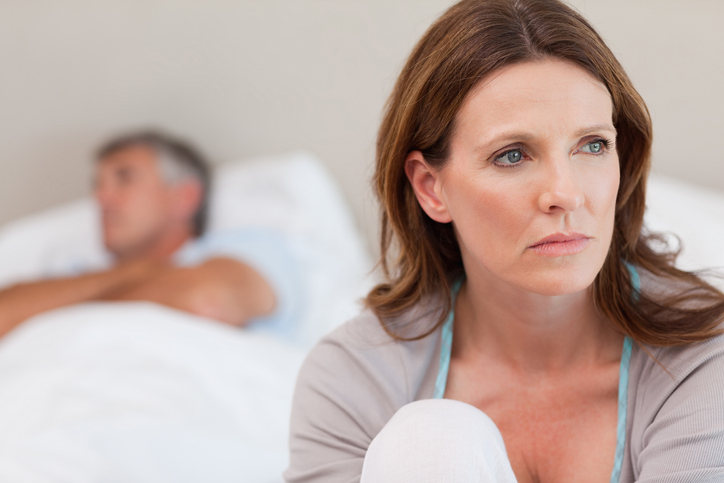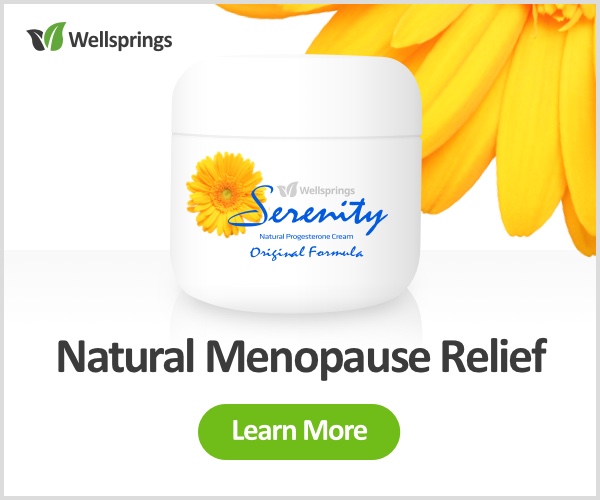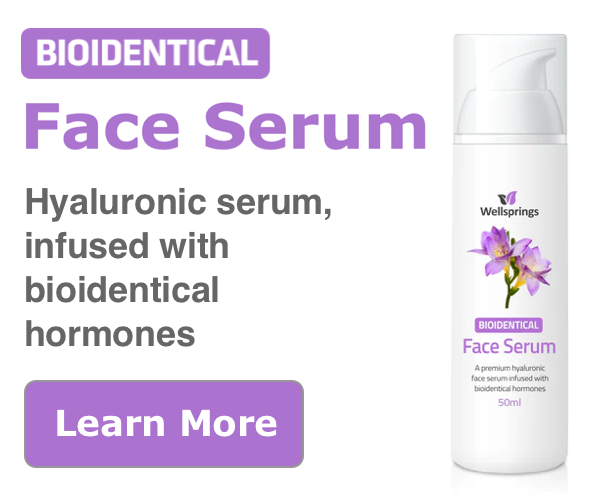Do You Have Dryness, Vaginal Atrophy or Vaginitis?
Vaginal dryness and discomfort is a fact of menopausal life for many women, but it is best to know exactly what you have and how to deal with it.

At menopause as hormone levels decline, women start noticing signs of dryness or tightness and sex may become uncomfortable.
There are several reasons for this, and a number of conditions that may need to be investigated.
Dealing with dryness
This is most common at menopause and related to the declining hormone levels that occur at this time.
This is not serious physically, though can certainly be distressing, and there are a number of lubricants available.
If you have mild to moderate dryness, using a lubricant can help relieve pain and discomfort while having sex but they provide short-term symptom relief and can improve vaginal dryness during sex, but there’s no evidence to show they’re an effective long-term treatment.
If you prefer a natural alternative then Wellsprings oestrogen cream, or 20-1, a combination cream with the majority ingredient of progesterone with two natural oestrogens added, can help and vaginal application is best.
Vaginal atrophy
This refers to the thinning of the lining of the vagina after the menopause and the resulting dryness, itching or discomfort (particularly during sex). It can be caused by a decrease in oestrogen levels at and after the menopause.
Your GP may recommend using a local oestrogen and that is normally necessary with atrophy until the condition is more stable.
Unlike combined or other forms of HRT, this only restores oestrogen to your vagina rather than to your whole body, reducing the risk of side effects.
Wellsprings Oestrogen cream was developed specifically to help women who want a more natural form of oestrogen to help this condition.
You can balance this additional oestrogen with bioidentical progesterone, and once the atrophy is under control you can use 20 to 1, a combined bioidentical progesterone and oestrogen cream.
Vaginitis
This is inflammation of the vagina that can cause itching, discomfort and discharge. It can be caused by any of the following infections or irritants:
– thrush is a common yeast infection that affects most women at some point
– bacterial vaginosis is a bacterial infection where the balance of bacteria inside the vagina is disrupted
– trichomoniasis is an STI (Sexually Transmitted Infection) caused by a tiny parasite
– chemical irritation for example, from perfumed soap, bubble bath, or fabric conditioner, or from spermicide and some sanitary products
– washing inside your vagina
– chlamydia which is an STI caused by bacteria
– gonorrhoea which is an STI caused by bacteria
– genital herpes which is an STI caused by the herpes simplex virus
Symptoms can include the following
– an abnormal vaginal discharge
– vaginal irritation or itching
– pain when peeing or having sex
– light bleeding or spotting
– a strong, unpleasant smell, particularly after sex, can be a sign of bacterial vaginosis or trichomoniasis, which can sometimes cause vaginitis
Time to see your GP or go to a sexual health clinic if you have any unusual vaginal symptoms, particularly if you have :
– vaginal itching or an unpleasant smelling vaginal discharge
– haven’t had a vaginal infection before
– had vaginal infections before but now your symptoms are different
– had a number of sexual partners, or you have a new sexual partner so you may have a sexually transmitted infection (STI)
– finished a course of medication for vaginal thrush, but your symptoms are persisting
There’s no need to see your GP if you’ve been diagnosed with thrush in the past and your symptoms are the same. If you’re sure you have thrush and you’ve treated it successfully in the past with over-the-counter medication, you can treat it yourself again.
Treating vaginitis
Treatment for vaginitis depends on what’s causing it. Yeast infections, such as vaginal thrush, are usually treated with antifungal medicines and bacterial infections are usually treated with antibiotics.
How to help yourself
There are number of self-help measures which can reduce the risk of these problems and help once they are diagnosed.
– keep your genital area clean and dry and take a warm bath rather than a hot one. Always use unperfumed soap to clean the area and dry yourself thoroughly
– avoid douching (spraying water inside your vagina) as it may make your symptoms worse by removing the healthy bacteria that line the vagina and help keep it free from infection
– do not use feminine hygiene products such as sprays, deodorants or powders
– use pads rather than tampons if you’re using vaginal creams or pessaries to treat an infection as tampons may ‘soak up’ the treatment meaning there’s less available in the vagina
– wear loose-fitting cotton underwear as it can be beneficial if you have external soreness, but it won’t prevent you getting vaginitis in the future
Helpful information:
Because women are often reluctant to talk about conditions like this, they are more likely to suffer in silence but there really is no need as help is readily available.
Always check with your doctor, as they will be able to establish whether you have dryness, vaginitis or atrophy or an STD.
Generally, maintaining good hormone balance with healthy levels of progesterone and oestrogen is a helpful measure too.
If you are concerned that your libido is declining, or your sex life not as active as it used to be, then the following article will be helpful as your diet can make a real difference.
https://anna.blog.wellsprings-health.com/best-foods-to-boost-libido/


















